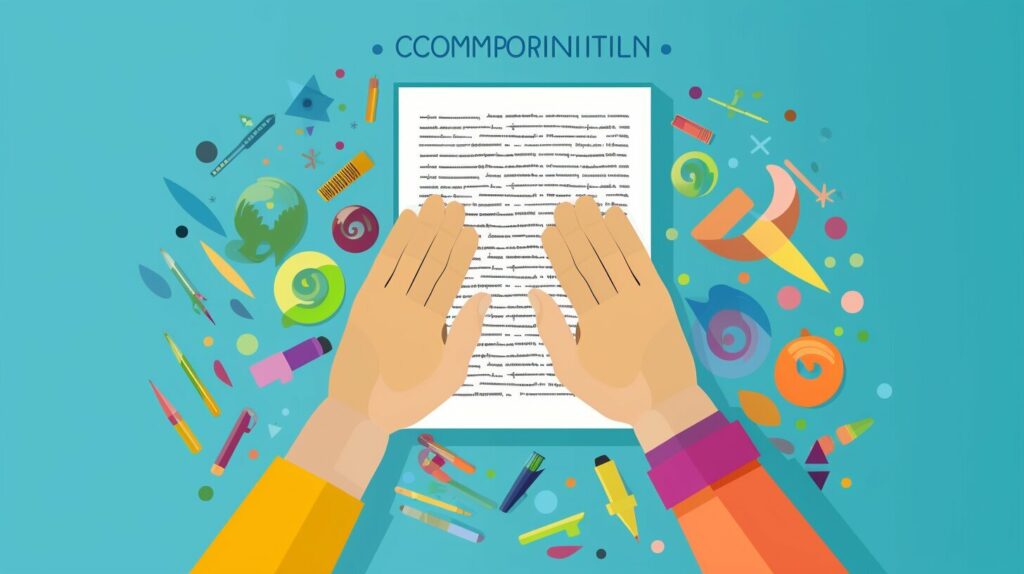Co-parenting can be an immensely challenging experience, requiring patience, cooperation, and open communication. One of the most important elements for a successful co-parenting relationship is setting clear boundaries. Boundaries enable co-parents to establish guidelines for communication, cooperation, and decision-making, which can help to minimize conflict and prioritize the well-being of their children.
In this guide, we will explore the different types of co-parenting dynamics, the importance of establishing communication guidelines defining parental responsibilities, and strategies for navigating special events and resolving conflicts. Whether you are just starting your co-parenting journey or looking to improve an existing arrangement, this guide will provide you with practical advice and insights to help you achieve a positive co-parenting relationship.



Key Takeaways
- Clear boundaries are essential for successful co-parenting.
- Effective communication is crucial in establishing and maintaining boundaries.
- Defining parental responsibilities and creating consistent rules can help to minimize conflicts.
- Resolving conflicts through mediation can lead to mutually beneficial solutions.
- Special events and holidays require careful planning and coordination.
Understanding Co-Parenting Dynamics
Co-parenting dynamics can be challenging, and it’s essential to understand the different types of co-parenting relationships. The three main types are cooperative, parallel, and conflicted co-parenting.
Cooperative Co-Parenting
Cooperative co-parenting involves open communication, mutual respect, and joint decision-making. This type of co-parenting is ideal, as it prioritizes the children’s needs and fosters a healthy relationship between the parents.
| Pros | Cons |
|---|---|
| Children thrive in a positive and supportive environment | Requires a high level of collaboration and commitment from both parents |
| Allows parents to share responsibilities and decision-making | May be challenging to maintain if there are underlying conflicts or issues |
Cooperative co-parenting is the goal for every co-parenting relationship and can be achieved through open communication, mutual respect, and commitment from both parents.
Parallel Co-Parenting
Parallel co-parenting involves minimal communication and interaction between the parents. In this type of co-parenting, each parent is responsible for making decisions and enforcing rules in their household without interference from the other parent.
| Pros | Cons |
|---|---|
| Parents can focus on their relationship with the children without interference or conflict from the other parent | May be challenging to maintain consistency between households |
| Can work well for high-conflict situations or situations where one parent is uninvolved | May lead to communication breakdown and conflicts over time |
Parallel co-parenting can be challenging, as it requires parents to maintain consistency between households without interference or conflict. It can work well for high-conflict situations or situations where one parent is uninvolved.
Conflicted Co-Parenting
Conflicted co-parenting involves ongoing conflict, disagreement, and hostility between the parents. This type of co-parenting can be detrimental to the children’s well-being and requires intervention and support to manage effectively.
| Pros | Cons |
|---|---|
| N/A | Can be harmful to children and lead to negative long-term outcomes |
Conflicted co-parenting can be damaging to the children’s well-being and requires intervention and support to manage effectively. Seeking outside support, such as therapy or mediation, can be beneficial in managing conflicts and finding mutually beneficial solutions.
Regardless of the co-parenting dynamics, effective communication and cooperation are essential for successful co-parenting. The next section will discuss practical tips for establishing communication guidelines with your co-parent.


Establishing Communication Guidelines
Effective communication is key in any relationship, particularly in co-parenting. As co-parents, it is essential to establish clear communication guidelines to ensure that both parties are on the same page, and that the children’s best interests are prioritized.
Here are some practical tips for establishing communication guidelines:
- Be respectful: Always communicate with your co-parent respectfully, even when emotions are running high. Avoid using derogatory language and instead focus on finding solutions to issues.
- Be open: Keep an open mind and an open heart when communicating with your co-parent. Listen to their suggestions and concerns and try to understand their perspective.
- Set boundaries: It is essential to set boundaries for sharing information about the children and scheduling co-parenting discussions. This can include creating a shared calendar or setting specific times for phone or in-person meetings.
- Stay organized: Keep track of important dates, such as school events or doctor’s appointments, to ensure that both parents are informed and involved.
- Use technology: Utilize technology such as email or messaging apps to communicate when face-to-face meetings are not possible. However, be sure to establish guidelines for the appropriate use of these channels.


“Communication works for those who work at it.”
– John Powell
Defining Parental Responsibilities
Dividing parental responsibilities is a critical aspect of co-parenting. It involves deciding together on various aspects of the children’s lives, such as education, healthcare, discipline, and extracurricular activities. A clear understanding of each parent’s role helps ensure consistency and stability for the children, reducing conflict and confusion.
It is essential to discuss and agree on parental responsibilities early on in the co-parenting relationship. Start by creating a comprehensive list of all the tasks and decisions that need to be made regarding the children. Then, work together to divide the responsibilities fairly and equitably.
When dividing parental responsibilities, consider each parent’s strengths, weaknesses, and schedules. For example, if one parent works from home, they may be better suited to oversee homeschooling and homework. If the other parent has a medical background, they may be better equipped to handle healthcare decisions.


| Examples of Parental Responsibilities | Parent A | Parent B |
|---|---|---|
| Education | Primary decision-maker for academic matters, including school choice, curriculum, and homework supervision | Supports academic success by providing assistance with homework and participating in school events and activities |
| Healthcare | Primary decision-maker for all healthcare-related matters, including doctor’s visits, medication, and emergency care | Maintains accurate records of medical history and supports health and wellness through healthy habits and lifestyle choices |
| Finances | Responsible for managing and providing child support payments, covering expenses related to education, healthcare, and extracurricular activities | Supports the children’s financial well-being by contributing to savings, college funds, and other financial investments |
Defining parental responsibilities requires open communication, flexibility, and a willingness to compromise. It may be helpful to revisit the arrangement periodically and make adjustments as necessary to ensure the children’s evolving needs are met.
Creating Consistent Rules and Discipline
Co-parenting can be challenging, especially when it comes to maintaining consistent rules and discipline across two households. It’s important to establish clear guidelines and expectations to ensure that children understand the boundaries and rules. Implementing consistent rules and discipline will help your children feel secure and safe, and it will also set a positive example for their behavior.
Here are some tips for creating consistent rules and discipline in your co-parenting relationship:
- Discuss and agree on the rules and consequences for misbehavior.
- Be consistent in enforcing the rules, regardless of which household the children are in.
- Work together to manage challenging behavior.
- Be respectful of each other’s parenting style and avoid undermining each other’s authority.
- Stay informed about what’s happening in your child’s life by communicating regularly with your co-parent.
Remember that it’s essential to work cooperatively with your co-parent to maintain consistency in rules and discipline. Setting clear expectations and boundaries will help your children understand what is expected of them and will help them feel secure.


“Children thrive when they feel safe and secure, and consistent rules and discipline help to provide that sense of stability.”
Managing Boundaries with Extended Family and New Partners
Co-parenting can be challenging, especially when extended family members and new partners are involved. It is essential to ensure that everyone is on the same page and that the boundaries set between co-parents are respected.
One way to manage boundaries with extended family members is to have an open and honest conversation about everyone’s roles, expectations, and involvement in the children’s lives. It may be helpful to create a schedule that outlines when and how often extended family members can spend time with the children, and to discuss any concerns or issues that may arise with the co-parent beforehand.
In the case of new partners, it is crucial to ensure that their presence does not disrupt the co-parenting relationship or the children’s routines. It may be helpful to have a conversation with the new partner about their role in the children’s lives, including expectations for their involvement and boundaries concerning communication with the co-parent. It is also essential to reassure the children that their relationship with both parents remains a priority, regardless of any new relationships.


Remember that establishing and maintaining boundaries with extended family members and new partners is essential for a successful co-parenting relationship. By communicating openly and honestly, and setting clear expectations, co-parents can ensure that everyone involved can contribute positively to the children’s lives.
Navigating Special Events and Holidays
Co-parenting during special events and holidays can be challenging, but with open communication and a focus on the children’s happiness, it is possible to create enjoyable and memorable experiences.
One of the first steps in navigating special events and holidays is to plan ahead. Depending on the co-parenting arrangement, parents may need to coordinate schedules to ensure both parents have time with the children. It may also be helpful to establish a method for communicating about plans and expectations for the holiday or event.
Table: Sample Co-Parenting Holiday Schedule
| Holiday/Event | Year 1 | Year 2 |
|---|---|---|
| Thanksgiving | Father | Mother |
| Christmas Eve | Mother | Father |
| Christmas Day | Father | Mother |
| New Year’s Eve | Mother | Father |
| New Year’s Day | Father | Mother |
It is also important to discuss how gifts and other holiday traditions will be handled. Some co-parents choose to coordinate gift-giving to ensure equal spending and avoid duplication. Others may opt for each parent to purchase their own gifts. Whatever the decision, it should be made with the children’s best interests in mind.
During special events and holidays, children often crave stability and routine. Co-parents can work together to create consistency between households by establishing similar traditions and upholding similar rules. This can help reduce stress and anxiety for children and ensure they have a positive experience.
Finally, it is important to remain flexible and open-minded during special events and holidays. Unexpected changes or conflicts may arise, and co-parents should be prepared to adapt and find creative solutions that prioritize the children’s needs.


Resolving Conflicts and Seeking Mediation
Co-parenting, like any other relationship, is not immune to conflicts. Disagreements may arise due to differences in parenting styles, financial issues, or scheduling conflicts, among other reasons. Left unresolved, these conflicts can escalate and negatively impact the well-being of the children and the co-parenting relationship. Thus, it is important to approach conflicts with a constructive mindset and seek mediation when needed.
Mediation involves a neutral third party who helps facilitate communication and negotiation between co-parents. A mediator can help identify the root cause of conflicts, clarify misunderstandings, and guide co-parents toward finding mutually beneficial solutions. Mediation can be particularly useful when co-parents have trouble communicating effectively or when emotions run high.
It is important to approach mediation with an open mind and a willingness to compromise. The goal should be to find common ground that prioritizes the children’s well-being and respects each co-parent’s boundaries. Mediation can be voluntary or court-ordered, depending on the level of conflict and the co-parents’ willingness to mediate.
When seeking mediation, it is important to choose a mediator who is experienced in co-parenting issues and has relevant professional qualifications. The mediator should be impartial and not take sides and should create a safe environment for honest and respectful communication.
If mediation does not result in a resolution, co-parents may need to seek legal assistance. In this case, it is important to hire a lawyer with experience in co-parenting and child custody matters. The lawyer can help co-parents understand their legal rights and responsibilities and represent them in court if necessary.
By approaching conflicts with a constructive mindset and seeking mediation when needed, co-parents can avoid escalating conflicts and maintain a positive co-parenting relationship for the benefit of their children.


Conclusion
Setting co-parenting boundaries is crucial for a successful co-parenting relationship. By understanding the dynamics and challenges of co-parenting, establishing clear communication guidelines, defining parental responsibilities, creating consistent rules and discipline, managing boundaries with extended family and new partners, navigating special events and holidays, and resolving conflicts with mediation, co-parents can create a positive and healthy environment for their children.
Remember, the journey of co-parenting is not always easy, and there may be bumps along the way. However, with patience, understanding, and a commitment to maintaining boundaries, co-parents can create a fulfilling and rewarding experience for themselves and their children.
We hope this guide for co-parenting boundaries has provided valuable insights and actionable tips for our readers. Remember, always prioritize the well-being and happiness of your children, and stay open and respectful in your interactions with your co-parent.
Thank you for reading, and best of luck on your co-parenting journey!



FAQ
What are co-parenting boundaries?
Co-parenting boundaries refer to the guidelines and limits that co-parents establish to define their roles, responsibilities, and expectations within a co-parenting arrangement.
Why are co-parenting boundaries important?
Co-parenting boundaries are important because they help establish clear communication, promote cooperation, reduce conflicts, and provide stability and consistency for the children involved.
How can I set effective co-parenting boundaries?
Setting effective co-parenting boundaries involves open and honest communication, mutual respect, and a willingness to compromise. It is essential to discuss and agree upon roles, decision-making processes, communication guidelines, and rules for consistency.
How do I navigate conflicts related to co-parenting boundaries?
When conflicts arise, it is beneficial to approach them with patience and understanding. Seeking mediation can help facilitate productive discussions and find mutually agreeable solutions that respect the established co-parenting boundaries.
Should co-parenting boundaries be flexible?
While co-parenting boundaries provide structure and stability, it is important to remain flexible and adaptable as circumstances change. Being open to reassessing and adjusting boundaries when necessary helps ensure the needs of the children and co-parents are met.
How can I involve extended family members and new partners in co-parenting boundaries?
Involving extended family members and new partners in co-parenting boundaries requires clear communication and mutual respect. Establishing boundaries that prioritize the well-being of the children and promote positive relationships can help maintain harmony within the co-parenting dynamic.
What should I do if my co-parent violates the established boundaries?
If your co-parent violates the established boundaries, it is important to address the issue calmly and openly. Communication is key in resolving conflicts, and seeking mediation or professional guidance can help find resolutions that uphold the co-parenting agreement.
How can I ensure consistency in co-parenting rules and discipline?
To ensure consistency in co-parenting rules and discipline, co-parents should communicate and collaborate on the expectations and consequences for their children. Regular discussions and establishing shared guidelines can help maintain consistency across both households.
Can co-parenting boundaries be modified as the children grow?
Yes, co-parenting boundaries can be modified as the children grow and their needs change. It is important to reassess and update boundaries to accommodate developmental milestones, changing schedules, and evolving parenting strategies.
What are the benefits of establishing and maintaining co-parenting boundaries?
Establishing and maintaining co-parenting boundaries can lead to improved communication, reduced conflicts, increased stability for the children, and the fostering of a healthy co-parenting relationship that supports the children’s emotional well-being and overall development.





Leave a Reply